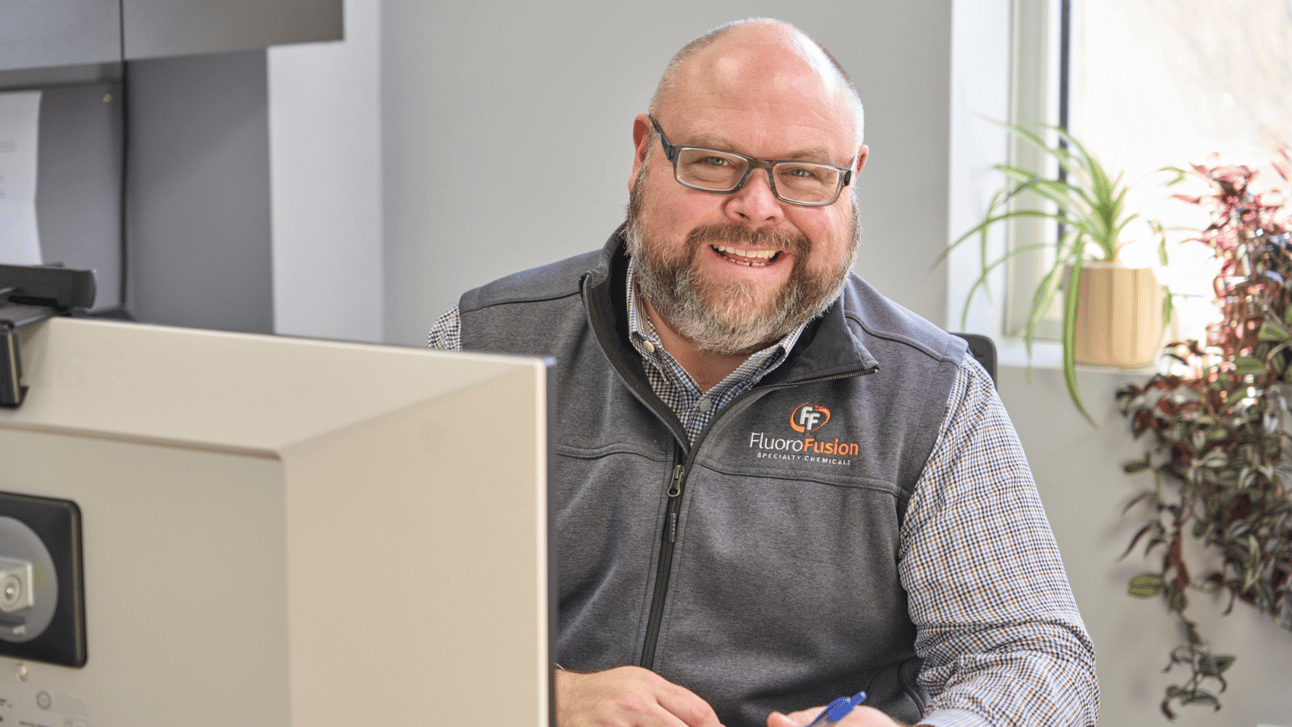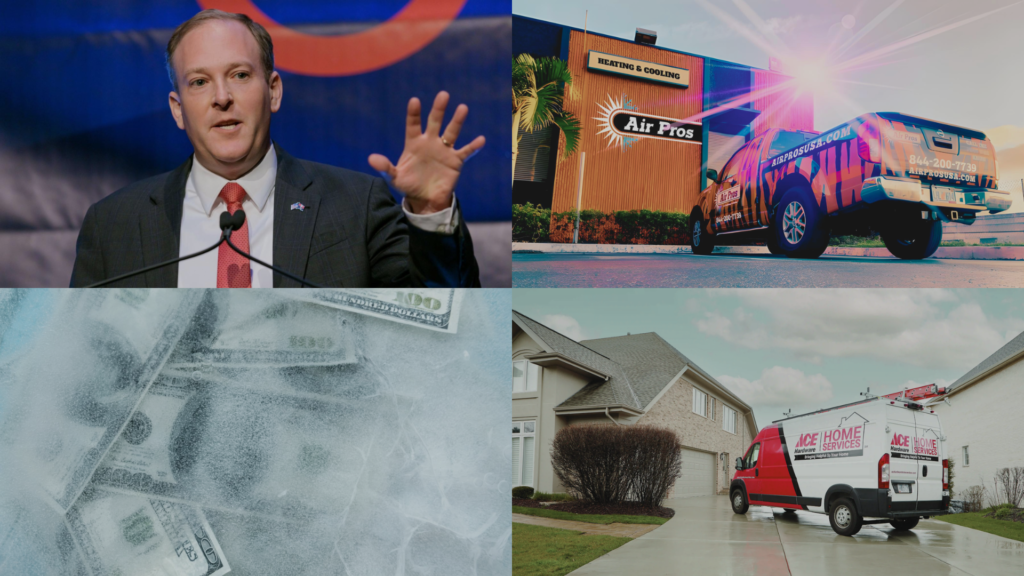The inside scoop on the HFC phasedown with FluoroFusion’s Brad Kivlan

Image: Brad Kivlan
Brad Kivlan, vice president of FluoroFusion, an EPA-certified refrigerant reclaimer based in North Carolina, has the inside scoop on all things refrigerants.
-
In conversation with us, he shared his thoughts on the phasedown, what contractors are saying, and what’s next.
The big picture: The HFC phasedown has a lot of moving parts, but can be understood by looking at it in three parts — or “rules.”
-
The first part, Kivlan said, is the allocation rule. “Every HFC refrigerant has a global warming potential (GWP). This rule assigns HFC allocations to companies based on the average of their three highest years of production and imports between 2011 and 2019.”
-
The second is technology transitions. “They look at [the] acceptable GWP limit for different sectors of the HVAC market — residential AC, ice machines, cold storage, etc.”
-
“Most notably, for producing new residential and light commercial AC and heat pump systems, there’s a 700 GWP limit beginning on January 1, 2025. This has led the transition to R32 and R454B in this sector.”
-
“Then, the refrigerant management rule. [This] defines leak rate limits, establishes reclamation standards, mandates the use of reclaim for certain types of equipment, and requires recovery of HFCs from disposable cylinders by EPA-certified reclaimers,” he added.
Why the industry’s pushing back: “I think the root cause of that issue is the fact that the people in the EPA making these rules don’t fully understand how contractors, refrigerant manufacturers, or reclaimers operate,” Kivlan said.
-
“They try to. And don’t get me wrong, the EPA has some very smart people, but you’re never going to fully understand how a business operates if you’re not working in that business.”
-
“[Additionally], the AIM Act gave the EPA about half of the normally allotted time needed to finalize some of these rules,” he added.
The latest: The refrigerant management rule is currently being reviewed — and expected to be finalized in September. In the proposed rule, the EPA mandates that reclaimed refrigerant be used for the initial charge of equipment starting in 2028, which, per Kivlan, is an EPA first.
-
“The EPA is expecting recovered gas to come back to reclaimers at a rate that’s not anywhere close to where it is today. If you look at the amount of virgin HFCs that are put into the market every year, we only get between 1.6% and 2.8% back as recovered material — it’s a very small percentage,” he said.
-
“If you require the initial fill (of new equipment) or service gas to be from reclaim, and there’s not enough reclaim, then how do we get equipment into the marketplace and service the current install base?”
-
Industry groups, including ACCA and HARDI, have proposed that the mandate should be based on the actual supply of reclaimed refrigerant in 2028 — their comments are being considered for the final rule.
What they’re saying: Recovery cylinders and tools make up the bulk of Kivlan’s conversations with contractors.
-
“The number one thing people ask me is what the recovery cylinders are going to be like. What do they look like? What are the requirements? We now know that they’ll have a red band around the shoulder and will have reverse threads on the valves.”
-
“If you transport them, you have to mark them with the correct DOT labeling. You won’t be able to use the non-flammable DOT label; it’ll have to be a flammable DOT label,” he noted.
-
“[And], you have to make sure that you have hoses with the corresponding fitting that works with new A2L cylinders (R32 and R454B) because they’ll have a reverse thread,” he continued.
-
“You’ll need an adapter to connect your current set of hoses to the refrigerant cylinder or you’ll need to find a new set of hoses with the correct fittings.”
Yes, but: Not all contractors actually recover refrigerant. Our question: Why?
-
“They don’t have a wholesaler to take it to or the wholesaler doesn’t give them any incentive to take it back. Plus, the EPA hasn’t enforced that rule in a very long time.”
-
“Very rarely do they publish an enforcement action against someone who’s intentionally venting refrigerant and not recovering it,” Kivlan explained.
Looking ahead: Kivlan highlighted the chance that existing refrigerants eventually become short in supply, possibly going on “allocation,” and encouraged contractors to have a reclaim partner to hedge against the risk.
-
“In the refrigerant space, whenever there’s a steep increase in demand and not enough supply, suppliers will assign customers an allocation based on their history of past purchases and the amount of recovered refrigerant submitted to their reclaim programs.”
-
“Let’s say everyone needs 410A and is putting in orders, but all the supply is running out. [Reclaimers or distributors] have to tell contractors, ‘We don’t have enough for all these orders, but based on your history of purchases and recovered refrigerants, we’ve allocated an amount that we can sell to you.’”
The bottom line: “Contractors still remember the R22 phaseout when they were told that the supply of R22 could go dry. Well, that didn’t happen. They’re thinking, ‘They always say we’ll run out and we never do,’” Kivlan noted.
-
“But don’t forget, during the R22 phasedown, there were alternatives you could use to retrofit R22 equipment, so there was never a shortage. This time may be different because there are no R410A alternatives available to offset the demand for it.”
📬 Get our stories in your inbox
Keep reading
Our most-read stories of March
The EPA's big announcement, a Chapter 11 bankruptcy filing, a look at Ace Hardware's HVAC play, and more
Organic lead volume pops 26% in Q1, analysis shows
Organic lead volume and average tickets grew in Q1, while customer acquisition costs fell, per an analysis of 100 contractors' marketing data
North Carolina joins 11 states, launches IRA rebates
Since October 31, the number of states with active rebate programs under the IRA has grown from nine to twelve


